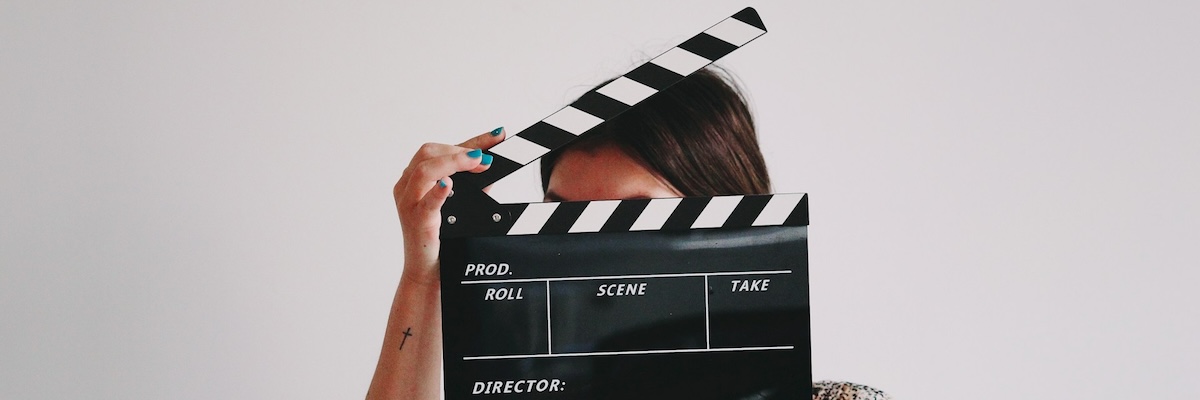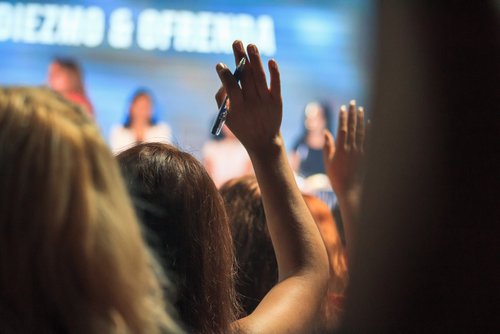Gender representation in media has always been a hot topic for discussion and debate. The way in which individuals are portrayed in various forms of media, such as movies, TV shows, advertising, and news, can have a significant impact on societal perceptions and beliefs about gender roles and identities. In this article, we will delve into the historical context of gender representation in media, explore the current state of affairs, analyze the impact of these representations on society, and discuss strategies for improving gender representation in media. Join us as we navigate through the complex world of gender portrayal in the media and its implications for our understanding of gender diversity and equality.
Understanding Gender Representation
Gender representation in media refers to how individuals of different genders are depicted, portrayed, and represented in various forms of media. It encompasses the images, roles, behaviors, and narratives associated with different genders. Understanding gender representation requires considering the social, cultural, and historical contexts that shape these portrayals and the impact they have on society.
Media plays a powerful role in shaping our perceptions and understanding of gender. It has the ability to reinforce or challenge societal norms and expectations related to masculinity, femininity, and gender identities. By examining the general overview of gender representation, we can develop a deeper understanding of its complexities and implications.
One aspect to consider is the prevalence of gender stereotypes in media. Stereotypes are oversimplified and generalized beliefs about individuals based on their gender. Traditional gender stereotypes often portray men as strong, assertive, and dominant, while women are depicted as nurturing, submissive, and focused on their appearance. These stereotypes can limit the range of roles and characteristics attributed to each gender, reinforcing rigid gender norms.
It is also important to recognize the evolution of gender portrayal in media. Over time, there have been significant changes in how genders are represented, reflecting societal progress and shifting attitudes. Early media often perpetuated and reinforced traditional gender roles and stereotypes. However, with increased awareness and advocacy, media representation has become more diverse and inclusive, challenging traditional gender norms and embracing a broader range of identities.
Analyzing key milestones in gender representation provides insights into the progress made in media portrayal. From groundbreaking films and TV shows to influential advertising campaigns, certain moments in history have sparked conversations and pushed for more inclusive representation. These milestones highlight the importance of representation in shaping societal perceptions and challenging existing norms.
By understanding the general overview of gender representation in media, we can critically analyze the current state of affairs, identify areas of improvement, and work towards creating a more equitable and inclusive media landscape. In the following sections, we will delve into the historical context of gender representation, examine the current state of gender representation in media, explore its impact on society, and discuss strategies for improvement. Let’s embark on this journey to unravel the complexities surrounding gender representation in media and its implications for our society.
Historical Context of Gender Representation in Media
The historical context of gender representation in media provides us with valuable insights into the origins and evolution of gender portrayals. By examining the past, we can better understand the present state of gender representation and the challenges that still persist.
Gender Stereotypes in Early Media
In the early years of media, gender stereotypes were deeply ingrained in the portrayals of men and women. Traditional gender roles were reinforced, with men often depicted as strong, heroic figures while women were portrayed as submissive and focused on domestic duties. These stereotypes were prevalent in movies, TV shows, print media, and advertising, reflecting the prevailing societal norms and expectations.
The Evolution of Gender Portrayal
As societal attitudes began to shift, so did the portrayal of gender in media. The feminist movement of the 1960s and 1970s challenged the traditional gender roles and called for more equal representation. This led to increased visibility of strong and independent female characters, breaking away from the passive and one-dimensional stereotypes.
Throughout the decades, there have been notable milestones in gender representation, such as the rise of female-led TV shows like “The Mary Tyler Moore Show” and “Buffy the Vampire Slayer,” which showcased empowered female protagonists. The introduction of more diverse and complex characters challenged the traditional gender norms, paving the way for greater inclusivity.
Key Milestones in Gender Representation
Several key moments in history have played a crucial role in shaping gender representation in media. The release of movies like “Thelma & Louise” and “The Hunger Games” showcased strong female leads who defied societal expectations and challenged gender stereotypes. These films not only entertained audiences but also sparked conversations about the representation of women in media.
Similarly, the LGBTQ+ rights movement has pushed for greater visibility and representation of diverse sexual orientations and gender identities. TV shows like “Will & Grace” and “Pose” have been instrumental in portraying LGBTQ+ characters with depth and authenticity, contributing to a more inclusive media landscape.
The rise of social media and online platforms has also had a significant impact on gender representation. It has provided a space for marginalized voices to be heard and has given rise to new forms of media that challenge traditional narratives. Digital influencers and content creators have played a vital role in promoting diverse and inclusive representations of gender.
Understanding the historical context of gender representation in media helps us recognize the progress made and the challenges that still exist. It serves as a foundation for analyzing the current state of gender representation and identifying areas for improvement. In the next section, we will explore the current state of gender representation in media through quantitative and qualitative analysis.
Current State of Gender Representation in Media
The current state of gender representation in media is a complex and multifaceted issue. To gain a comprehensive understanding, we need to analyze it from both quantitative and qualitative perspectives. By examining data and narratives, we can assess the progress made and the challenges that persist in achieving equitable representation.
Quantitative Analysis of Gender Representation
Quantitative analysis involves examining statistical data to assess the representation of different genders in media. This analysis looks at various aspects, including the number of male and female characters, their screen time, and the types of roles they portray.
Studies have consistently shown a significant gender imbalance in media. Female characters are often underrepresented, relegated to supporting roles, and portrayed in ways that reinforce traditional gender stereotypes. The Bechdel Test, a popular tool for evaluating gender representation, highlights the lack of meaningful interactions between female characters in many films.
Additionally, there is a disparity in the representation of intersectional identities, such as race, ethnicity, and sexual orientation. Women of color, LGBTQ+ individuals, and individuals with disabilities are often underrepresented or portrayed in stereotypical and limited ways.
Qualitative Analysis of Gender Representation
Qualitative analysis involves examining the quality, depth, and complexity of gender representation in media. It focuses on the characterization, storylines, and narratives surrounding different genders.
While there have been improvements in recent years, there is still a need for more diverse and authentic portrayals of gender. Many media narratives perpetuate harmful stereotypes and reinforce gender norms, limiting the range of possibilities for individuals’ identities and experiences.
However, there have been positive developments as well. More films and TV shows now feature complex and multidimensional female characters who defy stereotypes and challenge societal expectations. These characters provide audiences with relatable and empowering representations.
It is important to recognize and celebrate media that actively works towards inclusive and representative storytelling. By highlighting positive examples and supporting media that challenges gender norms, we can encourage the industry to embrace more diverse and authentic portrayals.
Media Platforms and Their Influence on Gender Representation
Media platforms play a significant role in shaping gender representation. The advent of streaming services, social media, and online content creation has opened up new opportunities for increased diversity and representation. Independent creators and digital influencers have the ability to challenge traditional narratives and amplify underrepresented voices.
However, these platforms also present challenges. They can perpetuate harmful stereotypes, spread misinformation, and contribute to online harassment and discrimination. Balancing the potential for positive change with the responsibility to promote ethical and inclusive representation is crucial.
Understanding the current state of gender representation in media is essential for advocating for change and pushing for more equitable and inclusive portrayals. In the following section, we will explore the impact of gender representation on society, examining how it influences perceptions of gender roles, self-image, and societal progress towards gender equality.
Impact of Gender Representation on Society
The impact of gender representation in media extends beyond entertainment and has far-reaching effects on society as a whole. It influences our perceptions of gender roles, shapes our self-image, and has implications for societal progress towards gender equality. Understanding these impacts is crucial in addressing the challenges and striving for more inclusive and equitable portrayals.
Influence on Perception of Gender Roles
Gender representation in media plays a significant role in shaping societal perceptions of gender roles. When certain genders are consistently portrayed in stereotypical ways, it reinforces existing gender norms and expectations. For example, the portrayal of women primarily as caregivers and men as breadwinners perpetuates the belief that these roles are inherent and unchangeable.
These portrayals can limit individuals’ aspirations and opportunities by reinforcing gender-based limitations and expectations. They contribute to the perpetuation of gender inequalities in various spheres of life, such as education, employment, and leadership positions.
Effects on Self-Image and Identity Formation
Media representation also has a profound impact on individuals’ self-image and identity formation, particularly during adolescence. Young people often look to media for role models and inspiration. When they see limited and stereotypical representations of gender, it can negatively affect their self-esteem and self-worth, especially if they do not conform to the prescribed norms.
Moreover, the lack of diverse and authentic representations can leave individuals feeling invisible or marginalized. This can have long-term effects on their sense of belonging and acceptance in society.
Consequences for Society’s Gender Equality Progress
Gender representation in media has implications for society’s progress towards gender equality. Inaccurate and limited portrayals reinforce existing power imbalances and hinder efforts to challenge gender norms. When media perpetuates stereotypes and fails to represent the full diversity of gender identities and experiences, it hinders the visibility and recognition of marginalized groups.
On the other hand, inclusive and diverse representations in media can challenge societal norms, promote empathy, and foster understanding. When media accurately reflects the experiences of individuals of all genders, it helps break down barriers and promotes a more inclusive and equitable society.
Understanding the impact of gender representation on society allows us to recognize the power of media in shaping perceptions, attitudes, and beliefs. In the next section, we will explore strategies for improving gender representation in media, with a focus on promoting diversity and inclusion, enhancing media literacy, and advocating for policy changes.
Strategies for Improving Gender Representation in Media
Improving gender representation in media requires a multi-faceted approach that involves various stakeholders, including media producers, consumers, educators, and policymakers. By implementing strategies that promote diversity, inclusivity, and equality, we can work towards creating a media landscape that accurately reflects the experiences and identities of all genders.
Promoting Diversity and Inclusion in Media Production
One crucial strategy is to actively promote diversity and inclusion in media production. This involves increasing the representation of underrepresented genders both in front of and behind the camera. Media companies and production studios should prioritize hiring diverse talent, including women, individuals from LGBTQ+ communities, and people of color, to ensure a more accurate and authentic representation of experiences.
Additionally, supporting and funding independent projects that challenge gender norms and provide alternative narratives can help diversify the media landscape. Creating opportunities for emerging voices and marginalized communities can lead to a greater range of perspectives being represented.
Educational Initiatives for Media Literacy
Media literacy education plays a vital role in empowering individuals to critically analyze and engage with media. By incorporating media literacy programs in schools and community settings, individuals can develop the skills to deconstruct harmful gender stereotypes, recognize bias, and demand more inclusive representations.
These initiatives should focus on teaching individuals how media constructs gender and influences perceptions and beliefs. By fostering critical thinking and media literacy skills, we can empower individuals to challenge harmful representations and demand more diverse and equitable content.
Policy Changes and Regulations for Fair Representation
Implementing policies and regulations that promote fair representation in media is crucial. Governments and regulatory bodies can play a significant role in ensuring that media companies prioritize diversity and inclusion. This can include setting quotas or guidelines for representation, providing incentives for inclusive content, and enforcing penalties for perpetuating harmful stereotypes.
Moreover, promoting transparency and accountability in media production can encourage media companies to actively address gender representation issues. Requiring companies to disclose information about the diversity of their workforce and the representation of different genders can help identify gaps and drive change.
By implementing these strategies, we can work towards a more inclusive and equitable media landscape. It requires collaboration between media professionals, consumers, educators, and policymakers to challenge existing norms and create space for diverse voices and experiences to be heard.
In conclusion, gender representation in media has a profound impact on societal perceptions, self-image, and progress towards gender equality. By understanding the historical context, analyzing the current state, and recognizing the impact, we can advocate for change. Implementing strategies that promote diversity, enhance media literacy, and enforce fair representation can help create a more inclusive and equitable media landscape that accurately reflects the diverse experiences and identities of all genders.


















